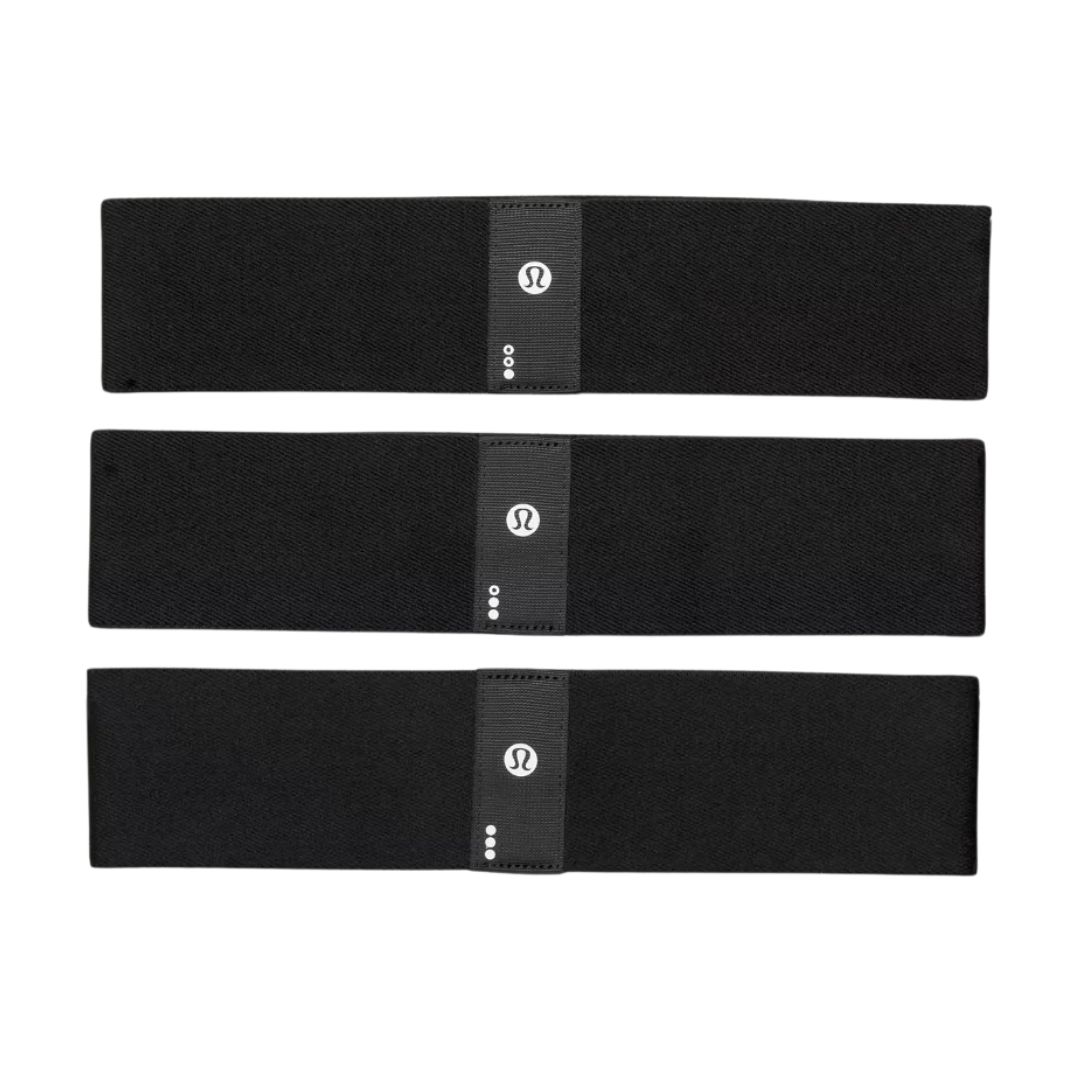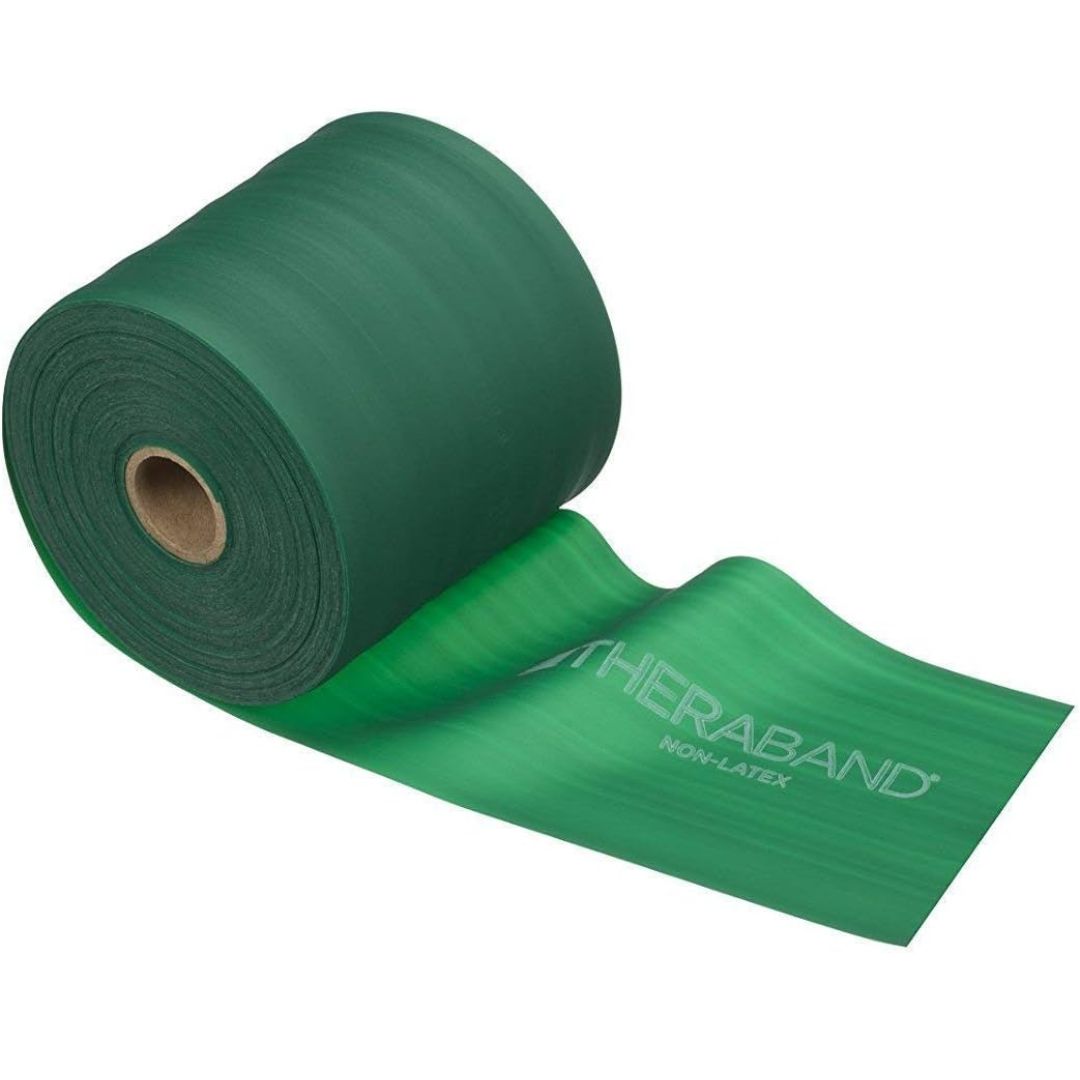I Added a Resistance Band To All Of My Pilates Workouts For a Week - and *Wow* The Burn Went Into Overdrive
Glutes on fire.
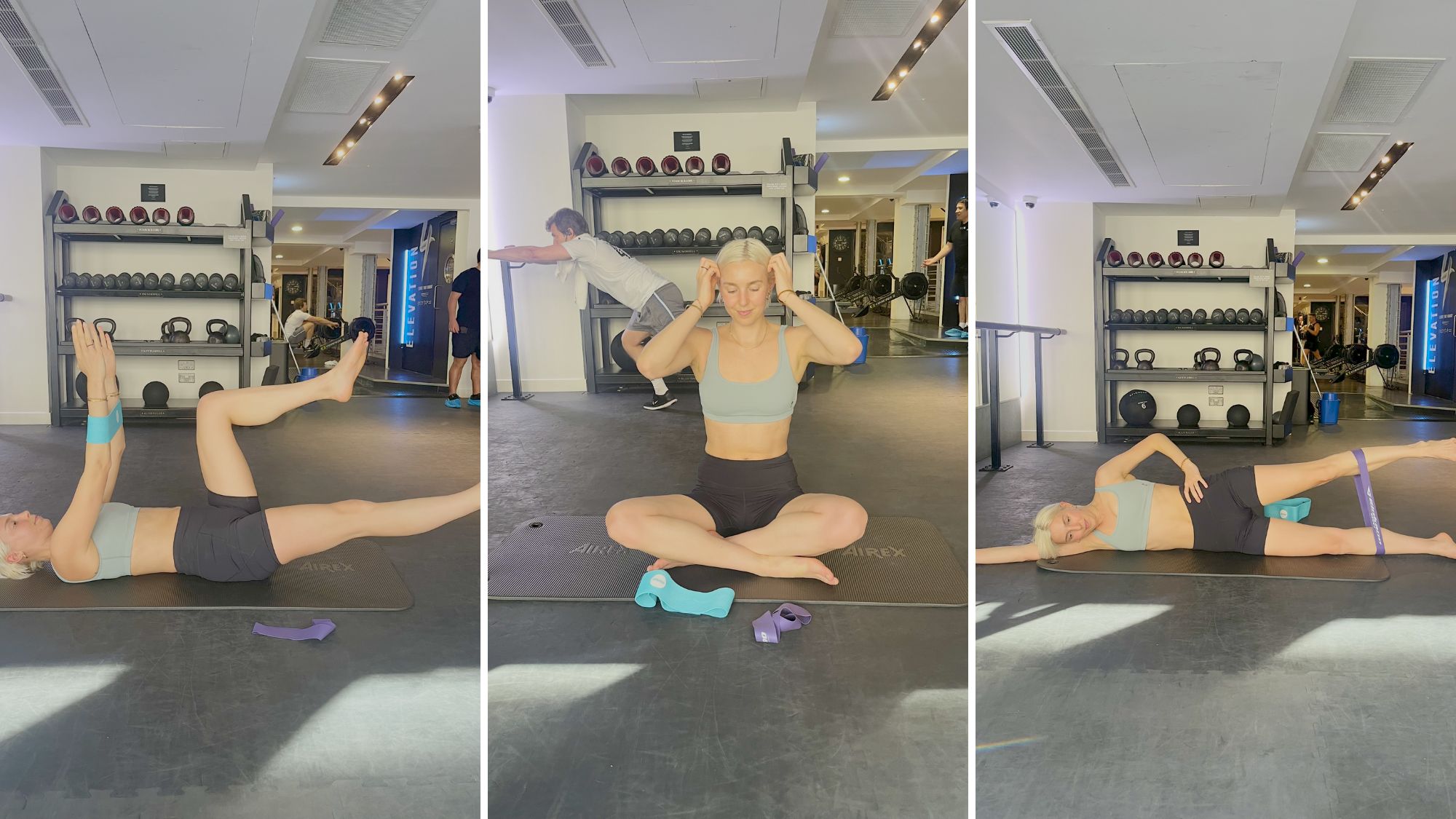

Hands up if you own a set of resistance bands? Now, hands up if they’re gathering dust at the back of the cupboard?
If you’re anything like me, then your hand is still firmly raised. Resistance bands have long been my workout back-up dancers: handy when I’m travelling or haven’t made it to the gym, but rarely something I turn to regularly.
So when a friend told me that she’d parted ways with her gym membership, in favour of bodyweight and resistance bands workouts, I was intrigued. I hadn’t noticed any change in her muscle tone, and if anything, she was looking stronger than ever. Could she really be getting the same results from some stretchy fabric and a yoga mat as she was from an expensive studio set-up?
It got me thinking. I’m not someone who spends hours in the free weights room - my strength training usually comes via Reformer Pilates, Barre and dumbbell circuits. But lately, I’ve been wanting to take things up a notch, as I’m conscious of maintaining muscle and supporting my bones and joints (all things we know resistance training is key for).
Still, I wasn’t totally sold. When you line a loop of elastic up next to the chunky pulleys of a Reformer bed or the hefty plates in a weight room, it’s easy to see why resistance bands can seem like the underdog of strength training. But as it turns out, science is on their side. Just take a look at this 2019 study, which found that training with resistance bands resulted in similar strength gains to conventional weight training, or this study in the International Journal of Sports Physical Therapy, which showed that resistance bands can even lead to greater muscle engagement, thanks to the constant resistance they provide throughout an exercise.
So, with this in mind, I decided to dust my resistance bands off and put them to the test by adding them to every single one of my Pilates workouts for one week. Spoiler: my muscles may never forgive me.
Keep scrolling to find out how I got on. And if you’re just starting out with resistance bands, it’s a good idea to take a look at our list of the 5 best beginner exercises. If you’re a little more advanced and are looking for some workout inspiration, why not head to our guides to the best Youtube resistance bands workouts, as well as the best glute resistance band workouts.
Celebrity news, beauty, fashion advice, and fascinating features, delivered straight to your inbox!
Resistance band Pilates workouts promise to be the best for boosting muscle - so I tried them for a week
Are resistance band Pilates workouts effective?
The short answer to this one is yes. “Adding resistance bands helps increase challenge, activate muscles more deeply, and bring variety to your movement practice without needing heavy weights or bulky equipment,” says Rebecca Dadoun, Pilates Instructor and Founder of Pilates Prescription.
But measuring effectiveness also depends on what your goal is, as Pilates Instructor and Founder of Beyond Move Pilates, Noemi Nagy-Bhavsar, reminds us, explaining that resistance bands can be used for building strength, increasing mobility or simply developing more awareness of muscle engagement and contraction. “Whether you’re looking for greater control, alignment or mind-body connection, the resistance band provides better visual, sensory and tactile feedback which deepens our connection to the principles of Pilates movements,” she explains.
What are the benefits of doing resistance band Pilates workouts?
When it comes to the perks of these portable, affordable strength-builders, the experts agree that there’s a long list.
“Essentially, using resistance bands helps to slow down our movement whilst, at the same time, shortening the range of movement,” says Nagy-Bhavsar. “This combination builds a positive friction which helps us to connect more deeply, effectively and efficiently to our core muscles. Ultimately, what this means is that the right muscle groups are more engaged and movements become more precise.”
So, why does that matter? According to Dadoun, it’s this increased engagement and precision that leads to some seriously powerful benefits.
1. Greater muscle activation, especially for the small stabilisers
“Bands add gentle resistance which forces your muscles to engage more intentionally,” Dadoun explains. “This is especially important for the smaller, stabilising muscles that often get missed.”
2. Serious strength building
Resistance bands are a subtle yet remarkably effective tool for building strength, because of the time in which they place your muscles under tension. “Resistance builds as you stretch the band,” says Dadoun, “which means that your muscles are under tension for longer. That time under tension strengthens your muscles without straining them.”
3. Improved muscle-mind connection
“Using a resistance band to increase the intensity means that you feel the work quicker,” says Dadoun. “This increased awareness means that you move more intentionally, which can help to improve your form.”
4. Improved joint stability
“Bands challenge your control, which means your joints and core have to work harder to stay steady and supported,” explains Dadoun. “This is especially great for strengthening your knees, hips, shoulders and core, without the impact on your joints that you would get through lifting weights.”
How heavy should resistance bands for Pilates be?
If you’ve ever considered buying a set of resistance bands, or just grabbed the first one you spotted at the gym, you’ll know that they vary hugely in how much resistance they provide. That’s why there’s no one-size-fits-all answer when it comes to choosing the right band. Instead, experts suggest having a small selection to suit different exercises and muscle groups.
“It’s not a one-size-fits-all,” explains Nagy-Bhavsar, who cautions against going straight for the toughest band. “There's no point jumping straight to the hardest band because it will create tension, unwanted pressure, rigidity, and momentum, which isn’t what we’re looking for.”
A good rule of thumb? Go lighter for upper body work and heavier for lower body moves. “Use lighter bands for upper body and smaller muscle groups, and go heavier for bigger movements like squats or bridges,” advises Dadoun. “For larger upper body movements, such as press-ups, you could work up to a medium resistance band.”
Personally, I found it took a bit of trial and error to figure out what worked for me, and that’s completely normal. If you're unsure whether your band is too strong, Nagy-Bhavsar suggests tuning in to your body for some subtle signs. “If you're holding your breath, tensing your jaw, clenching your glutes or grasping the band with force, it’s likely that the band is too strong for that particular exercise.”
Ultimately, the goal is to add resistance without adding unnecessary tension. “Try not to grip the band hard,” says Nagy-Bhavsar. “This increases tension in the upper trapezius and reduces the connection to smaller muscles that need to engage.” Instead, she recommends holding the band gently between your thumb and palm. This helps offload the effort from your upper body and shift it toward the muscles you actually want to target, such as your back and core.
Who are resistance band Pilates workouts best for?
Resistance bands can benefit almost anyone looking to bring more variety and challenge to their body weight Pilates routine, but some people may find them especially helpful.
Dadoun notes that resistance bands are ideal for those with limited time. “Resistance bands can make ten minutes go a long way,” she explains. “So, for those looking to get more out of shorter workouts, they can be a great addition.”
Nagy-Bhavsar agrees, adding that bands are also a smart option for people with hypermobility, or those who need to modify exercises due to posture or core engagement issues. “The band provides us with sensory feedback, which allows those with hypermobility to stay within a safe range of motion,” she explains. “For those who are struggling to engage their core, modifying an exercise with a resistance band helps to align positioning, whilst engaging and strengthening the smaller muscles.”
And we can’t ignore the cost factor - studio memberships, especially for Reformer Pilates, can be expensive. If you're not ready to commit to the cost, resistance bands offer an affordable alternative. “For anyone feeling underwhelmed by their body weight Pilates, but who doesn’t want to invest in a studio membership, resistance bands can provide similar progression,” says Dadoun.
I tried adding resistance bands to my Pilates workouts every day for a week - here’s how I got on
Days One to Three
The night before my resistance band Pilates trial begins, I’m rifling through my under-bed storage. Somewhere beneath packing cubes and far too many winter jumpers are the resistance bands I stashed away about a year ago. Where exactly is another matter.
Eventually, I find them: a five-piece rubber set from Amazon, ranging from light to XX-heavy, and a fabric band from Shreddy. The difference is immediately clear. The Shreddy band is thicker and more comfortable, perfect for wrapping around thighs or arms without rolling up mid-move. The rubber ones, by contrast, tend to curl and snap into awkward shapes, but they’re ideal for anchoring around the arches of my feet during lower-body exercises.
For my first workout, I go for a 45-minute full-body resistance band Pilates class on YouTube. I’d always associated bands with leg day, so I’m surprised when the instructor has me loop one around my forearms. Some movements are clearly upper-body focused, like bicep curls and tricep dips, but even during glute and core exercises, the band keeps my arms activated and my spine aligned. It also keeps me mentally engaged because each time I feel the band slacken, it’s a reminder that I’ve lost tension and need to reset.
The next day, I’m short on time and in the mood to focus on glutes, so I go for a 25-minute abs-and-glutes session before work. These movements feel more familiar (think glute bridges, side-lying leg raises, ab curls) but all are given an extra kick by the medium band. For exercises where I feel stronger, especially glute bridges, I switch to the heavy band, and soon the slow-burning fatigue of banded glute work really starts to take hold. I’m used to DOMS (delayed onset muscle soreness) creeping in the next day, but by lunchtime I’m already feeling it.
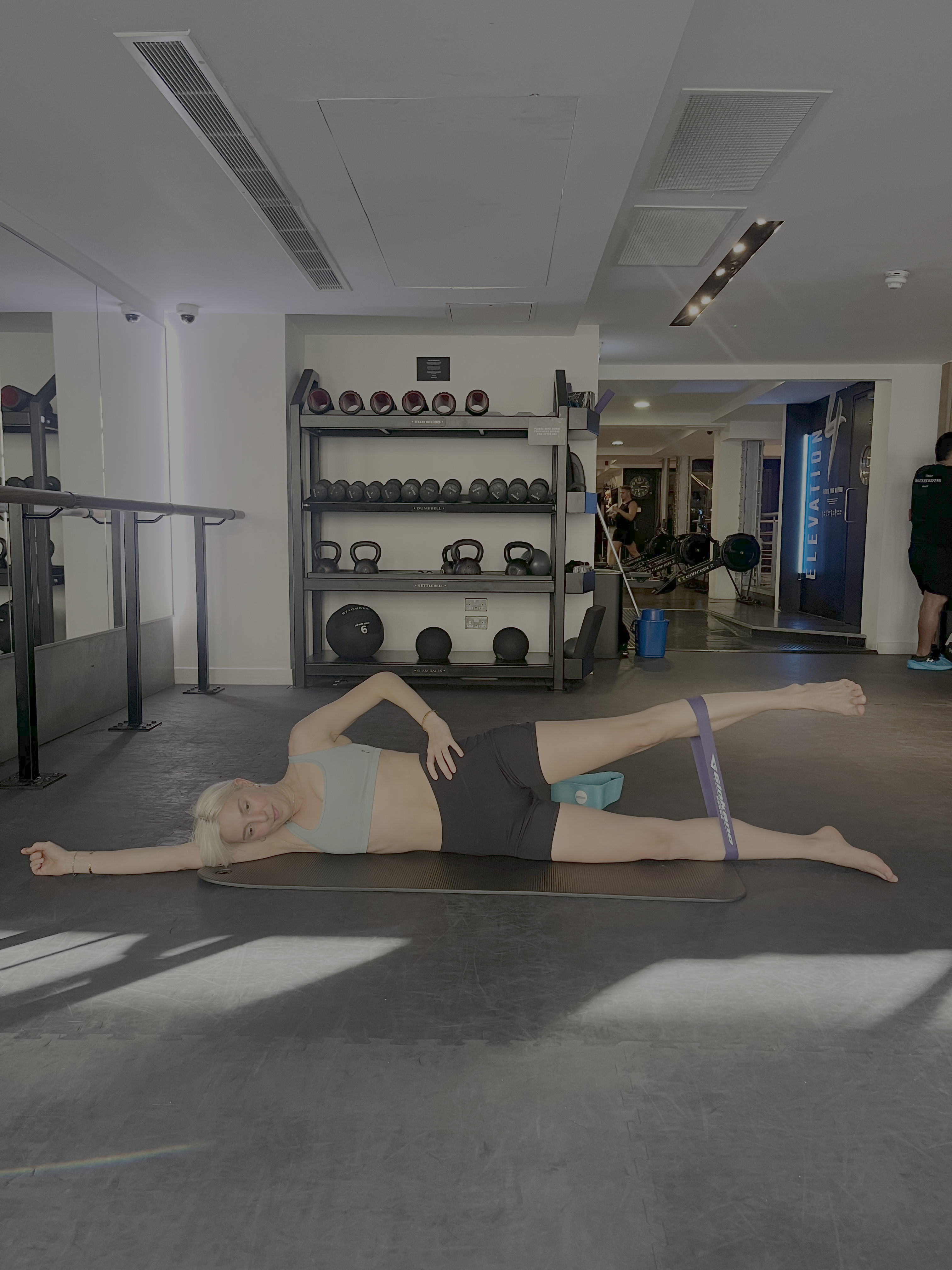
By the third morning, my glutes are well and truly on fire, so I give them a break with a quick 10-minute arm-toning Pilates session, followed by a steady 5K run. I use the light band, but even with minimal resistance, my shoulders and back are working hard to stabilise each movement. Unlike leg exercises, the arm work feels more subtle and precise, and the band intensifies every rep. If I lose tension, the movement falls apart. It’s a full-body reminder to stay present, to move with control, and to respect even the smallest muscles.
Days Four to Seven
By day four, I’m ready for a full-body session. Thursdays are usually my Reformer Pilates day, so I’m curious to see whether resistance bands can replicate that studio experience. I search YouTube and come across a banded Reformer-style class from The Glow Method. There’s just one issue: it calls for a flex band, which is different from the looped bands I’ve been using. Luckily, a friend has one I can borrow.
The flex band mimics the Reformer’s leg straps surprisingly well, letting me recreate many of my favourite studio moves, like leg lowers and assisted teasers, with a similar sense of resistance and support. It’s the closest I’ve come all week to a Reformer workout, and I’m genuinely surprised by how effective the session feels.
By the next day, my muscles are loudly protesting. I usually stick to four or five Pilates sessions a week, and I want to stay within that limit, so I can judge the bands themselves rather than the effects of increased volume. I opt for a short vinyasa yoga flow instead, combined with some deeper stretching.
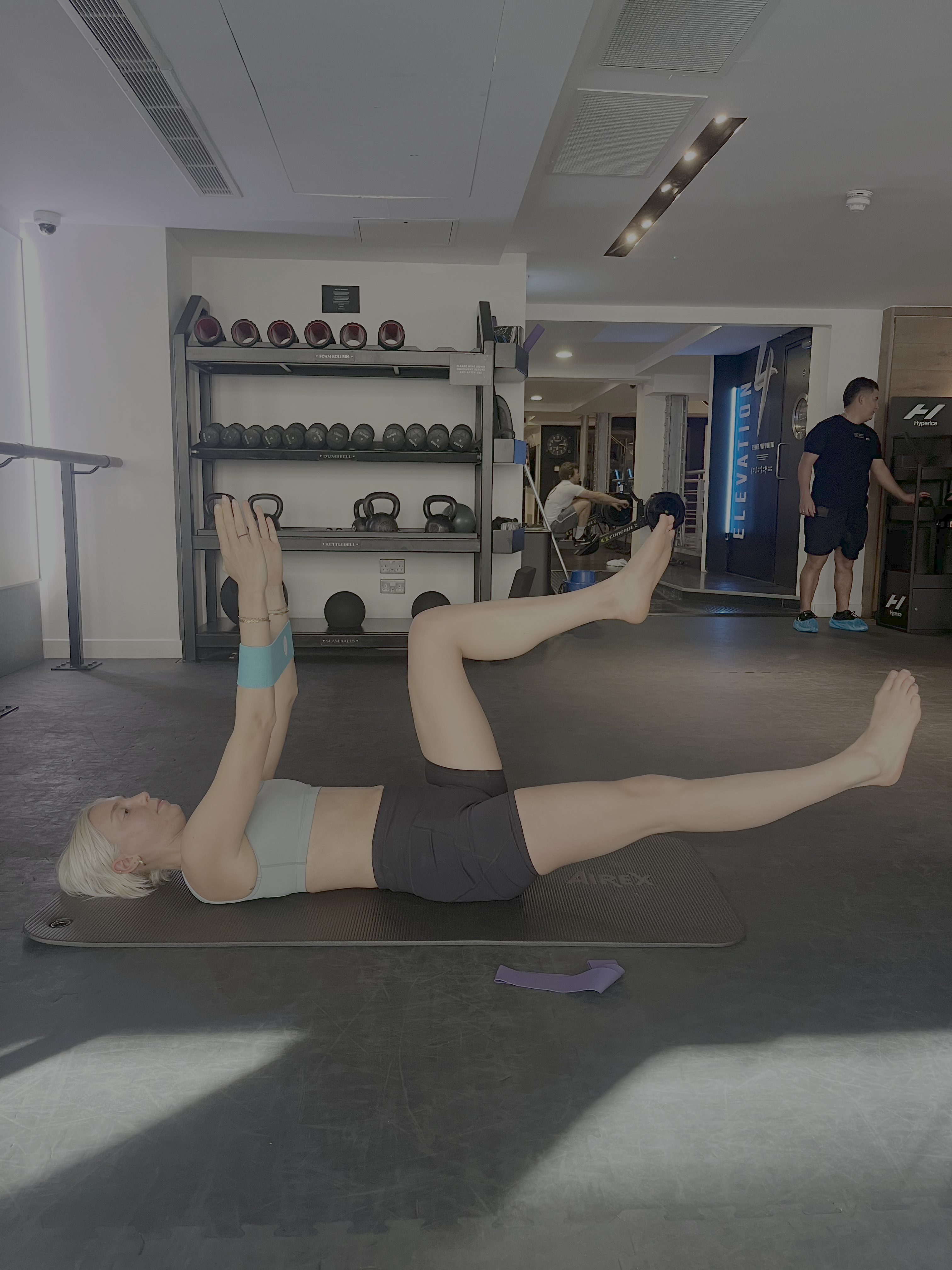
By day six, I’m feeling more recovered and ready to move again, so I try a 15-minute ab-focused Pilates class. Short, but intense. Normally, I’m guilty of using momentum to get into a Teaser, or letting my core slacken during leg lowers. With the band, there’s nowhere to hide. It keeps me honest, highlighting every dip in form. I take a few breaks, but the quality of my reps is far better than usual.
By the final day, I can tell my body has worked harder than usual, particularly in muscles I tend to overlook (or didn’t even realise I had!) Reflecting on the week, I’m impressed. The resistance bands brought more control, awareness, and challenge to every session. As someone who runs regularly, I did find my legs were more fatigued than usual, and it affected my other training slightly.
So while resistance bands won’t be part of every Pilates session I do going forward, this week has definitely earned them a place in my routine. They’ve helped me move with more control, stay more present, and challenge my muscles in ways I didn’t expect. If you’re curious, it’s worth giving them a go, even just adding them into the odd workout might bring a new sense of connection to moves you thought you’d already mastered.

Shop MC UK approved fit kit now:
Can you incorporate resistance bands in Reformer Pilates?
We often associate resistance bands with mat Pilates, but it turns out that they can be incredibly useful in Reformer too. In fact, as Pilates Instructor and Founder of Pilates Prescription, Rebecca Dadoun, explains, “the two complement each other beautifully. In mat Pilates, bands can mimic the resistance and spring tension of the Reformer. In the studio, bands can be added to Reformer work for additional layering or to support you in moving through tricky ranges of motion.”
Noemi Nagy-Bhavsar, Pilates Instructor and Founder of Beyond Move Pilates, concurs, adding that resistance bands can help to ensure correct alignment within Reformer Pilates. “Placing a resistance band around the mid back when doing an exercise such as a plank on the Reformer can help to provide feedback on the engagement of our shoulder blades and lateral back muscles.”
The experts also say that adding resistance bands to Reformer Pilates can help to cultivate a more efficient and full-body workout. “When using the Reformer for a leg exercise, try adding a resistance band exercise for the upper body,” says Nagy-Bhavsar, “as this will enable you to work the whole body within one movement.”

A former heptathlete, Ashleigh is a freelance journalist, specialising in women’s health, wellbeing and lifestyle, with words in Stylist, Cosmopolitan, Glamour and Marie Claire. She’s also the Co-Founder of Sunnie Runners, an inclusive London based run club.
